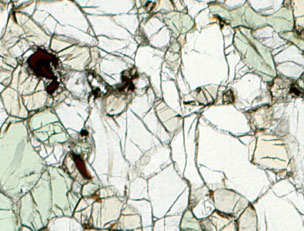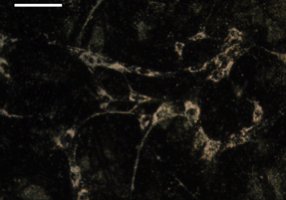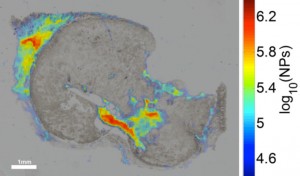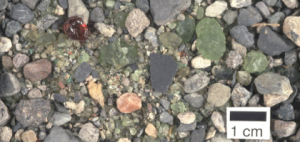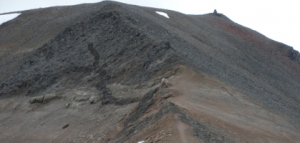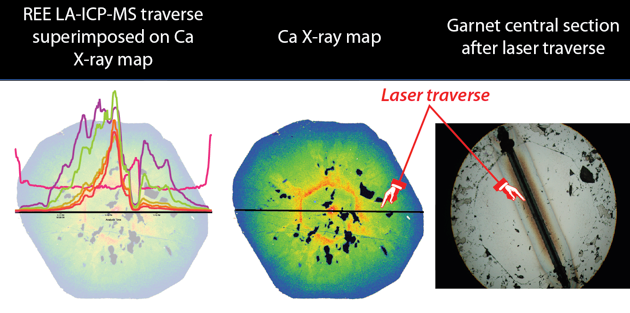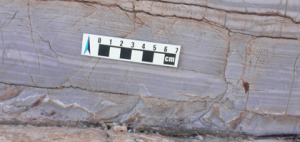Featured Research Projects
The following is a running collection of ICP-MS affiliated research projects highlighting significant findings.
Benjamin Walther & Megan Nims, UT Marine Science Institute Project summary: Because some trace elements vary predictably across salinity gradients, and these elements can be reliably incorporated into biogenic carbonates such as fish ear stones (otoliths), we can reconstruct fish movements in estuaries using laser ablation ICP-MS. This project examined movements of southern flounder, an…
Benjamin Byerly and John Lassiter, UT Austin Clinopyroxene is generally regarded as the primary host of incompatible trace elements in spinel peridotites. This is reflected in the general agreement between cpx and whole-rock trace element patterns in peridotite xenoliths. Clinopyroxenes in peridotite xenoliths from Cerro Chato, NM, USA are LREE-enriched and have large negative HFSE…
Laura Ricles, Seung Yun Nam, Stanislav Emelianov, and Laura Suggs (Dept. of Biomedical Engineering) Cardiovascular diseases are the leading cause of death globally. Current research is focused on using stem cell-based therapy for cardiovascular diseases in order to promote neovascularization and rescue ischemic tissue. However, a major challenge to the development of these cellular therapies…
Jason Cook, Wolfgang Frey, and Stanislav Emelianov UT Austin Dept. of Biomedical Engineering We designed a custom photoacoustic microscope with optical resolution to image and quantify nanoparticles in cells and thin tissue slices. Quantitative photoacoustic (qPA) imaging is based on the dependence of the photoacoustic signal with both the nanoparticle quantity and the laser fluence….
Lauren E. Avery, Brad J. Holliday Holliday Research Group Department of Chemistry and Biochemistry The University of Texas at Austin Spent fuel from nuclear reactors contains several radioactive isotopes with long lived half lives. With the advent of fast spectrum reactors many of these long lived products can be transmuted into shorter lived radioisotopes, creating…
Doug Smith, UT Austin Extraordinary serpentine-rich diatremes occur in the interior of the Colorado Plateau. These diatremes have a matrix of serpentinized ultramafic microbreccia; within the matrix are inclusions of sedimentary rock, granite, granulite, eclogite, peridotite, and many other rock types. Discrete grains of forsterite, pyrope, and pyroxene are also scattered throughout the matrix. LA-ICP-MS…
Jason Keiser (MS Candidate – U. Mass) I am using the full array of chemical analytical techniques to characterize individual basalt flows as well as felsic ash flows from an 8-9 million year old Oxnadalur bimodal volcanic complex in north-central Iceland. Felsic eruptions in Iceland are rare, but can be quite voluminous. Many studies have…
Linda Passaniti (MS Candidate) Ion Concentrations in Sulfonated poly(arylene ether sulfone) (BPS) Reverse Osmosis Membranes Due to the presence of sulfonate groups, BPS acts as an ion exchange membrane, allowing it to separate solute from solvent in part through the preferential transport of cations and near exclusion of anions. ICP-MS data are used to determine…
William Carlson Group Stephanie J. Moore – UT Austin Understanding of rare earth element (REE) uptake and distribution in metamorphic garnets is essential to sound interpretation of petrologic and geochronologic analyses relying on REEs. This study examines garnets in pelitic rocks from the Picuris Mountains, New Mexico and Passo del Sole, Switzerland and in a…
Nathan Miller – UT Austin ACTIVE PROJECT: Trace elements in highly laminated basal facies of Neoproterozoic cap carbonates from several well-studied global localities are being surveyed by LA-ICP-MS to evaluate preservation and formation mechanisms. The popular conception of cap carbonates is that they form in response to the transfer of alkalinity from the atmosphere (build-up…



